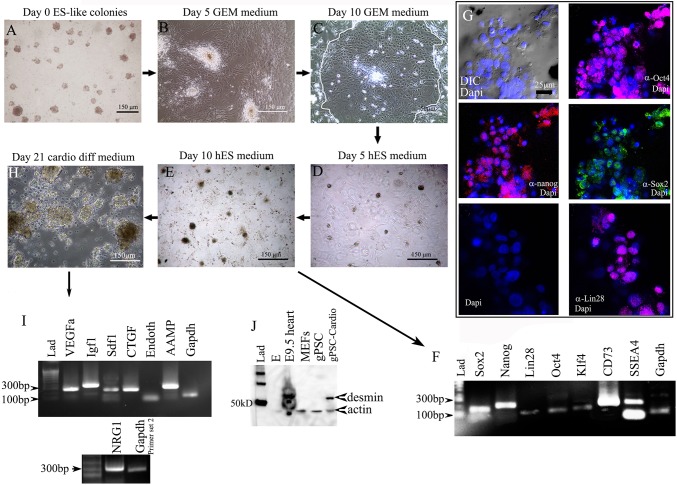Figure 4.
Culturing hgPSC colonies in GEM allows for their rapid expansion without the loss of stemness. A) hgPSC colonies grown in hESC medium lose their colony structure beginning ~5days post switching to GEM (B). By day 10, most colonies become individual layers of cobble-stone shaped cells (C-white outline shows region of cobblestone pattern of cells), which can be expanded indefinitely. Switching GEM for hESC medium, colonies begin to re-form within 5 days (D), and by day 10 hgPSC colonies fully return (E). F-G) Rt-PCR shows that these colonies express all the same stem cell factors prior to expansion, which is confirmed by confocal microscopy. Nuclear staining of Oct4 (647 nm- Far red), Nanog (594 nm/ Rhodamine- Red), Sox2 (488nm/FITC- Green), and Lin28 (647 nm- Far red) is prevalent (G). H) 21 days post differentiation, large dark colonies form, which are all positive for paracrine factor gene expression (I). J) Western Blot analysis of the colonies shows they are positive for the cardiac intermediate filament desmin similar to the mouse heart. Undifferentiated gPSCs are negative for desmin as are mouse embryonic fibroblasts (MEFs).

